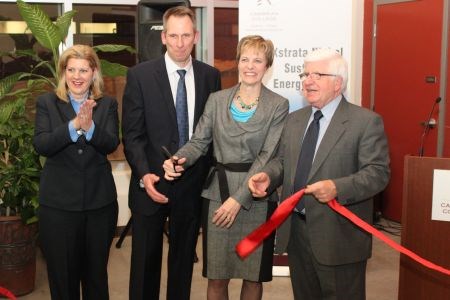After years of discussions and planning, the Xstrata Nickel Sustainable Energy Centre in Sudbury officially opened its doors.
The new centre will be home to cutting-edge applied research and education for Cambrian College students in the Energy Systems Technology and Environmental Monitoring and Impact Assessment programs.
“What's going on here is some really interesting applications of sustainable energy technologies applied to buildings and elsewhere,” said Marc Boissonneault, vice-president of Xstrata Nickel, Sudbury operations. “We've always been interested in education, with the Sudbury area in particular, and we saw this as a field that's going to be a growing importance going forward.”
Xstrata Nickel contributed $2 million to the project. The college also received support from FedNor and the Northern Ontario Heritage Fund Corporation (NOHFC) to build the centre.
The centre was built to exceed the Canada Green Building Council's Leadership in Energy and Environmental Design (LEED) gold standards, rather than taking a standard building approach and adding green elements to its design.
John Hood, Cambrian's former dean of technology, originally came up with the concept of a 'Living Building.'
“It turned out to be a LEED gold building, so the concept has changed a little bit, but it's still one of the first of its kind,” he said.
Now the director of the Renewable Resource Recovery Corporation, Hood's company holds a patent on photovoltaic panels designed for the exterior walls. The centre is powered by 18 of them.
“In the summertime, one of the problems with them is they're only 20 per cent efficient,” said Hood. His company has put a heat extraction system embedded into the walls behind the panels to pull the the heat, so the panels don't lose efficiency.
Hood figures they have enough energy with those panels to provide electricity and heat for a moderate size building.
All the piping, panels and pumps are installed on a wall of a classroom so the students can access it for class work and projects.
“This is a very positive development that we're anxious to see how the programs here evolve and how they continue to attract increasing numbers of students,” said Boissonneault. “We're going to be interested in where it takes them, and we're going to be watching closely and supporting where we can.”




